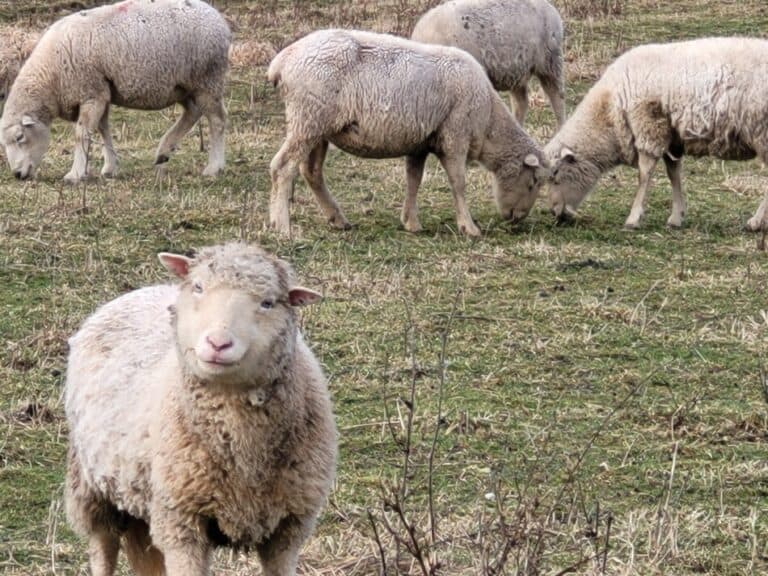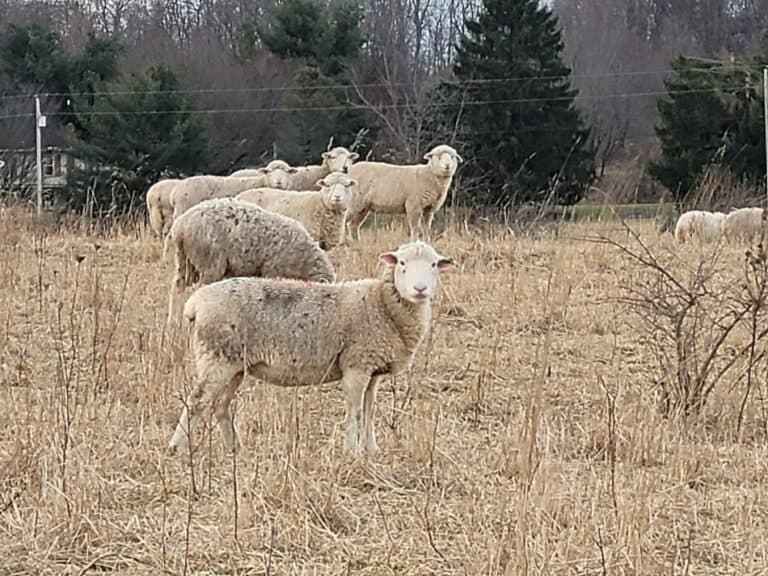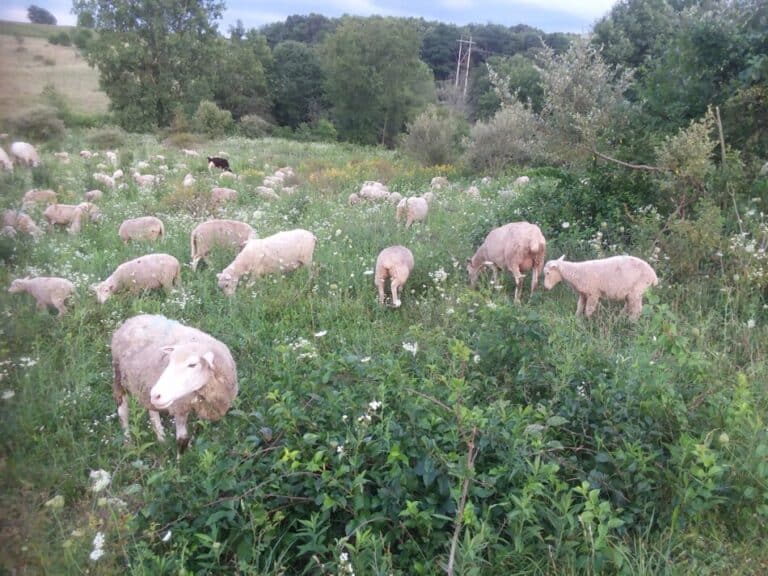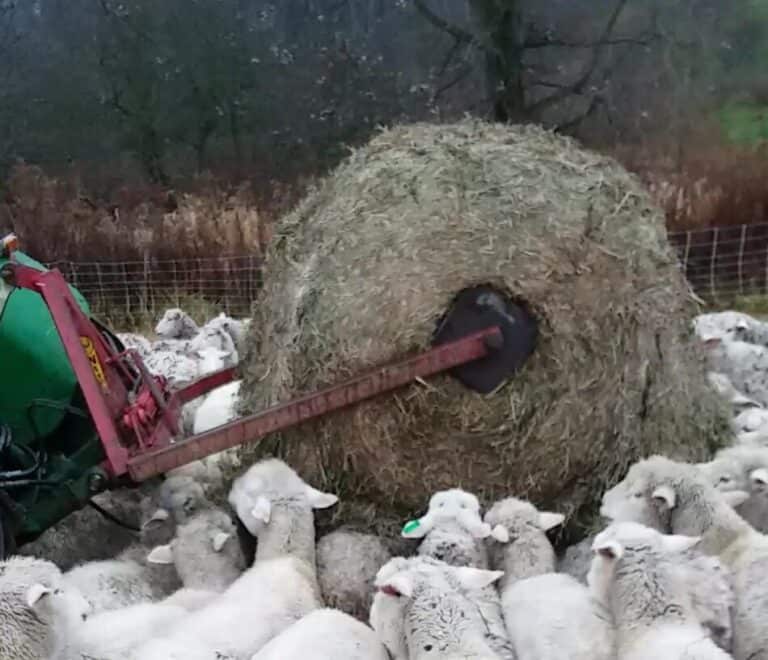How To Select For A Grass Fed Flock Of Sheep
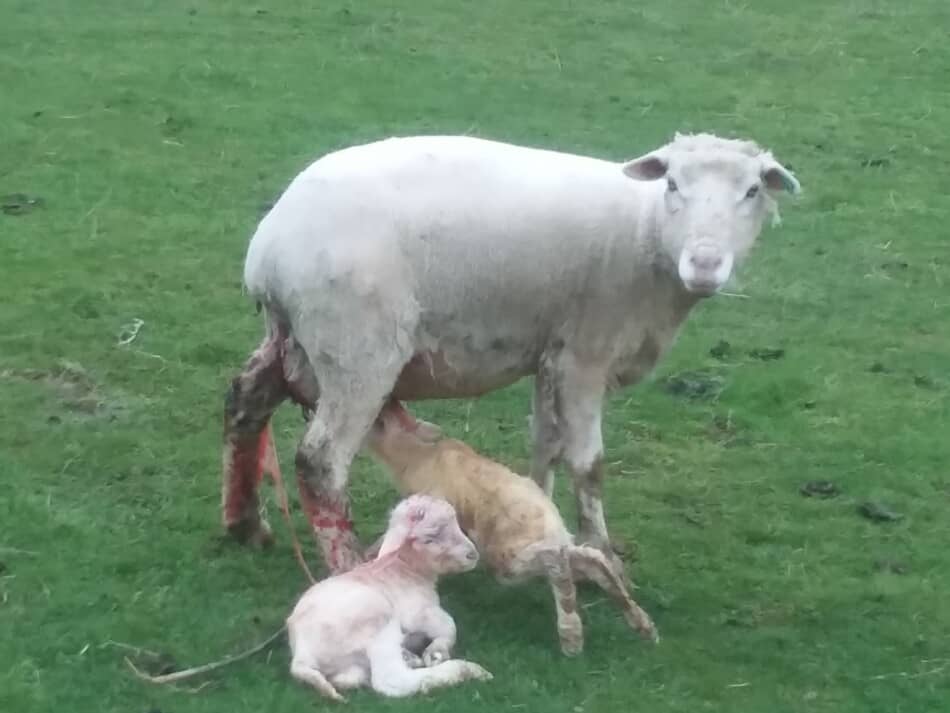
There are really only two ways to get a grass based flock of sheep, buy it or build it. Which is the best choice for you?
To get a grass based sheep flock, buy your starter flock from a farmer whose management style you plan to use or make yearly keep or cull decisions with your current sheep based on their performance on grass.
A grass based sheep flock: buy it or build it? Not so surprisingly, it depends!
Sheep For Profit goes over the numbers you need to know if you are planning to raise sheep as a business.
Buy your starter sheep from a grass based, local flock
Pros: Fastest start, years of selection done for you
Cons: Higher initial cost
This is the “buy it” option for grass fed sheep. Buying a grass based starter flock is a fine place to get started and the fastest way to the results you want.
In this case the selection you are making is regarding the management of the person you are buying the sheep from, not so much the sheep themselves.
Seek to match flock management style
The best sheep to get for your area will be sheep that are working well for another sheep farmer using the same management system that you plan to use.
Don’t pick breed or looks, think about the management first. You need to buy sheep that have been selected to perform in the system that you plan to use.
Even if you buy sheep from closer to home, the area needs to be basically the same at both places for the sheep to do well from the get go.
All sheep will need some adjustment time when coming to your farm and performing under your management. Not all of them will make the cut.
The closer you start to your ideal with your initial sheep, the easier it will be for you to get what you want from your sheep.
And the less time and stress you will have tied up in fixing mess ups or culling to suit your farm.
Easy Breeds Of Sheep For Beginners gives you a short list of breeds that are likely to be very beginner friendly.
Choose sheep based on performance
You’ll need to choose the specific traits (and the corresponding management that will be required) that you want to focus on and rank order them.
I’m serious about this. Write this stuff down.
At least for me, when I make a ranked list, it usually turns out a bit different than I thought it would. Try it for yourself.
While no sheep are perfect, you’ll need to have your plan sorted out so you know what to look for.
The best sheep for your grazing program need to be chosen based on performance only, not looks and not breed association brochure information.
It only matters what the sheep has done and is likely to do for you in the future. If all performance factors are equal, now go with a small matter of looks, but only as a tie breaker.
Let me clarify, this is for a commercial flock or at least sheep that you want to pay their own way. If you are getting sheep as a hobby or pets, you don’t worry so much about performance and can please yourself.

You have choices for your flock management
If you are wondering, what traits is she talking about, I just want sheep to do well on grass?
I can understand your question, but dig deeper. You’ve got choices here that you aren’t even aware of!
Management activities you may or may not want to do:
- helping with lambing
- taking off tails
- ewes that need jugs (small pens to help the mom and babies bond)
- shearing
- supplemental grain
- dealing with high strung (hyper) sheep
This list is just to get you thinking and none of these things listed are good or bad, it’s about what you are willing to do with the flock.
Keep or cull your sheep according to performance
Pros: You can select for specific traits that you want, lower initial cost
Cons: This is a long term project (years) and will require hard culling
This is the “build it” option for having a grass based flock of sheep.
This is the slower way to get results, but may be the best option for you, especially if you are limited with cash or can not get the genetics you would like to buy.
The way you build your flock to being grass based is by culling. Culling means selling the sheep that are not doing what you need them to do.
You will need to continue to cull through out your life as a sheep farmer, this is not a one shot deal. Culling is the tool used to direct your results.
Culling low or non performing sheep will make your time and resources, especially feed, get you more results.
Each individual sheep does not care how well she performs, what her peers do as far as production or whether or not you are getting what you want from the flock.
The only one who cares about this stuff if you, so you are the one who has to cull to keep your flock working within the guidelines you have set.
Cull your worst performing ewes
What traits should you cull for? For most sheep farmers, this will be raising lambs.
I would suggest picking a trait that is easy to monitor and makes a measurable difference that will eliminate wasted money or time spent with the sheep.
Here are a few management activities that may be your main consideration:
- raising and weaning lambs
- assistance needed at lambing
- multiple births
- supplemental grain
- deworming
Which is the most important to you? For instance if you can not be around during lambing, you may need sheep that never require assistance.
Or if you plan to sell Organic lamb, you’ll need a flock that will perform well without chemical dewormers.
Our main trait that we cull based off of is weaning lambs. No lamb, she doesn’t stay.
A ewe that weans twins is ideal, a ewe that does not wean a lamb, for whatever reason, is a freeloader and has to go.
We don’t really care what the ewe looks like or what her fleece is like, just that she works for a living, like the rest of us!
When To Cull Sheep From Your Flock is an Oregon State University article which gives a list of specific reasons to cull. These reasons may not match your list, but it’s worth a look to get a few different options then decide for yourself.
Keep records on your sheep, especially when extra care is needed
You’ll have to pick and work on eliminating any sheep that are not helping you get to that goal.
Make note in your records:
- Which ewes look the best out there in the pasture?
- Who carries good body condition easily?
- Which sheep need to be dewormed more frequently than the rest?
- Does one or two constantly “need” to jump out of the fence?
- Who needs more help with lambing or will not care for her lambs unless you pen them up?
Next time you decide to sell some sheep, you’ll know who to pick out of the group by using the notes you have made.
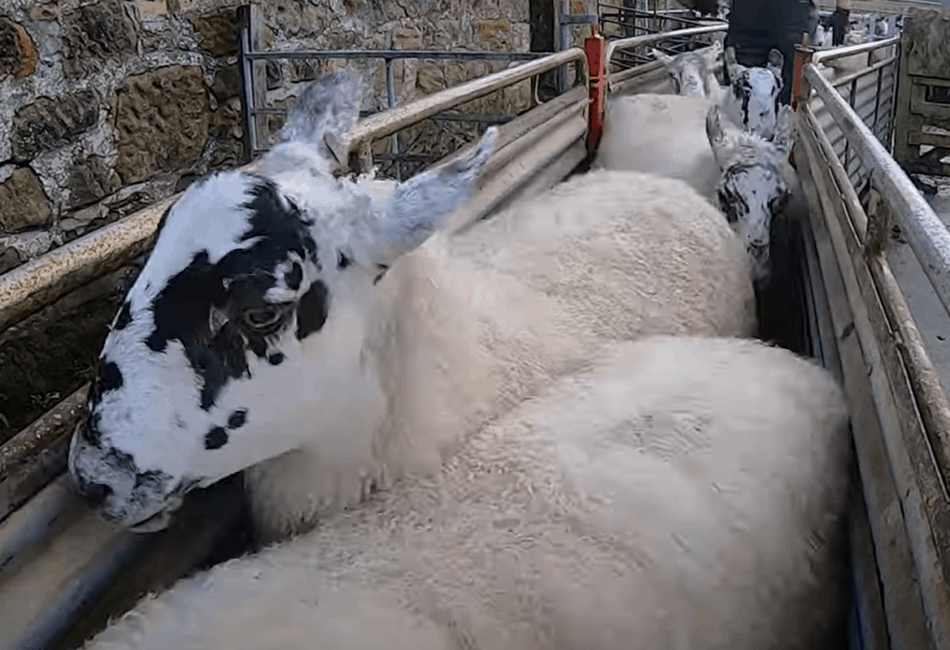
You’ll also know which sheep to keep back replacement ewe lambs from. This is a biggie.
A hard working ewe may not look super good after a hot summer and weaning twins.
If she’s a productive sheep, she’ll gain back her condition once the lambs stop nursing, but she might look a bit thin until then.
If you don’t have your records straight, you might look over your sheep and see this thin ewe and sell her, thinking she is a poor doer! Yikes!
She’s a hard worker that is making you money, but you’ll only know that if you keep track of who your sheep are and what they are doing.
I have to admit, I don’t like that this ewe would be getting thin to raise twins, I would rather she keeps decent body condition and raises the twins.
But until all of the rest of the flock is raising twins and staying in good body condition, I would rather feed this ewe more and have the twin lambs to sell than replace her with a ewe that is less productive.
This is my outlook for our sheep, not necessarily yours. Think about what you are willing to do, what is profitable to do and decide.
Not all extra care results in culling the sheep
I think of any sheep that needs more than the rest of the flock as having “one strike”. I am willing to give her the benefit of the doubt one time, but I keep track of what she needed.
Examples that count as one strike:
- feet trimming
- extra deworming
- flighty behavior
These are things that I just don’t like dealing with, but will accept from the sheep if she is performing otherwise.
How do I evaluate performing? Producing market lambs.
We are working towards eliminating sheep that have any of these needs, but we aren’t there yet.
This group of “strikes” will only result in the culling of a ewe when she is the lowest performing ewe of the flock and we are overstocked.
For me, a sheep that needs dewormed more than the rest is a harder keeper than I’d like, but we will keep her if she does everything else well.
For instance, is the reason she needs that extra deworming because she got run down nursing nice twins and she’s less stress resistant than normally this year?
This sheep I’m happy to keep, she’s a worker.
An extra dose of dewormer for the result of a great ewe raising a beautiful set of twins? Not a problem for me.
Certain extra work with the sheep means she needs to be culled
Examples of extra care that result in culling the sheep:
- getting out of the fence
- prolapse care
- not caring for her lambs
- bad teeth or udder
This group of problems is a much bigger deal. These problems need to be culled out of your flock, always.
These problems do not fit the “strike” idea. Instead, this list results in culling of the sheep even if this is the only problem we have with the ewe.
A pattern of extra care means sell the sheep
If however, you look back through your records (you are writing this stuff down, right?) and notice that this is the same ewe that looked junky three months ago.
Now you have a pattern of her needing more work than the rest of the flock, this is her second “strike” and that is a red flag to me.
Sell her and do not keep any of her lambs as replacements, either. They are likely to need the same extra work from you.

Culling sheep is your most important decision
Culling is always a tough call, but the only way to improve your results.
Any sheep that needs care or management that you are not willing to do from here out, needs to be culled.
However, if you are looking to expand your flock, you may decide to keep sheep that are not as easy to keep as you would like.
I can understand this and we have done this very thing when we were building up to our current flock size.
Keeping genetics you would normally sell because you want to increase the flock is a false economy. It comes back to bite you in the following years.
Keeping back the ewe lambs from your best ewes, of course, we never sell those!
Keeping back the ewe lambs from ewes that take more work than you want to put in? No, bad idea.
The only one keeping your flock moving towards your goal of grass based genetics is you, you must cull non performers.
Is Keeping Sheep Easy? goes over the work involved with being a full time shepherd.
Not all sheep or breeds will work well on grass
While sheep are naturally grazers, not all sheep individuals or breeds will work for you.
There isn’t a specific breed that is perfect for you, but there is a flock that the farmer’s management decisions and selections will produce sheep that are great for you.
To be clear, you’re seeking out a flock management style not the breed or cross breed of sheep.
For instance, a sheep with a large frame (bigger boned and taller), like a show sheep, will have a hard time getting what she needs from grass alone.
Her body needs more calories than she can eat in a day. A big framed sheep will most likely needs supplemental grain to keep in good condition.
A smaller, wider framed sheep is more likely to be what you are looking for. This gal will be more efficient and easier to keep well on grass.
Realize that saying a specific breed does not work well on grass is probably not the case. Individual sheep vary within a breed.
The more important thing to understand is that the sheep will only give you the results you see at the breeder’s farm, if you do what the breeder is doing.
Not all areas can raise grass fed sheep
A final consideration for your sheep dreams is matching up your area with the livestock you raise. Notice I didn’t write sheep, I wrote livestock.
It could easily be that when you consider the resources that are available in your area, you realize that you should get goats, for example, instead of sheep.
This is important information! Stop and think carefully about how much work you are willing to put into your flock.
Anytime the area and the livestock are mismatched, it will cost you more resources to raise the animals. The extra cost could be money, but it also could be time and stress.
Sheep need grass, water, prefer cooler temperatures and need protection from predators.
Does your area provide those things most of the year?
Here’s a short list of area characteristics that are not sheep friendly:
- extremely hot
- woody or shrub like growth instead of grass
- high predation
- extreme distance to sell your marketable sheep
These things listed are out of your control. Short of moving, you’ve got what you’ve got.
Are you willing to do the things it will take to make having a flock of sheep successful in your area?
How are you planning to make money on your sheep? If you are selling market lambs, where is the nearest auction or buyer?
If you are planning to sell privately, where is the nearest custom butcher? Do people in your area want grass fed lamb for the price you are happy to sell it for?
If you are happy to have grass fed sheep and not worried about profit, no problem.
However, you will eventually need to sell some stock, so at least have some sort of a plan for culls or extra market lambs when you need to reduce numbers.

